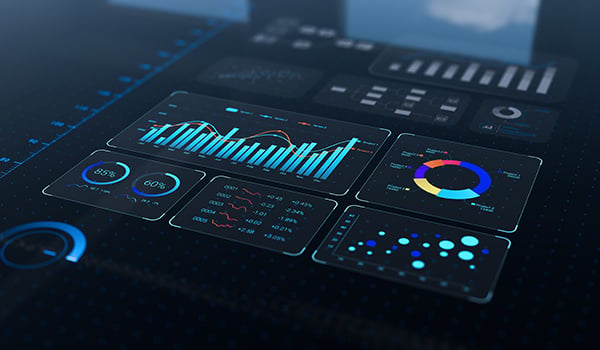Enterprise technology has never been static. Over the past three decades, companies have moved from standalone desktop applications to client-server architectures, from on-premise ERP to the proliferation of SaaS. Each transition has improved accessibility, efficiency, and the ability to make data-driven decisions.
Now, a new transformation is underway: the rise of Agentic AI applications. As I covered in my last article, these systems do not simply store and retrieve data. They analyze, reason, and autonomously act, unlocking new levels of intelligence and automation.
Microsoft CEO Satya Nadella recently observed that the emergence of Agentic AI - tools capable of orchestrating workflows across multiple systems without direct human prompts - could fundamentally alter the SaaS model. Much like how SaaS revolutionized enterprise IT by making software more scalable, Agentic AI will redefine how companies operate, learn, and compete. For CIOs and CTOs, the question is not whether this shift will happen - it is whether their organizations are for it.
Agentic AI is Only as Good as the Data That Powers It
Traditional enterprise software digitized business processes, but it still required human intervention at every step. SaaS improved connectivity and made structured data more accessible, but insights remained largely reactive. Businesses continued to rely on dashboards and reports to extract meaning rather than having systems that could proactively optimize workflows.
Agentic AI presents a fundamental change. Instead of waiting for users to query a dataset or initiate a workflow, AI agents continuously observe, interpret, and execute decisions. This transition promises to unlock enormous business value. AI could predict supply chain disruptions, anticipate product quality issues, and optimize regulatory compliance in real time. However, realizing this vision requires more than just deploying AI models.

Without structured, reliable data, AI cannot recognize patterns, build relationships between variables, or make confident decisions. Clean data is not just an asset. It is the prerequisite for AI-driven automation.
The Data Problem Enterprises Must Solve
Most organizations are not yet in a position to leverage Agentic AI because their data is fragmented across disparate legacy systems. The enterprise technology landscape is cluttered with bespoke third-party tools, internally built applications, and outdated systems that were never designed to work together.
As a result, IT organizations are shifting their focus toward platform rationalization programs. By consolidating applications and reducing reliance on fragmented solutions, companies can build a foundation of structured, taxonomized, and harmonized data. This approach does not just streamline operations. It establishes the clean data layer required for AI to function effectively.
A unified enterprise platform offers several advantages:
- Consistency across functions – By standardizing data structures across R&D, quality, manufacturing, and supply chain, companies eliminate inconsistencies that slow decision-making.
- Data integrity for AI training – AI models require high-quality, schema-defined data to generate accurate predictions. A common platform ensures that data is not only clean but continuously validated.
- Seamless AI integration – Instead of retrofitting AI solutions onto legacy systems, businesses can embed AI capabilities into a platform that was designed for intelligent automation.
Leading enterprises are already making this transition. They are not simply deploying AI in isolation but are first investing in the infrastructure necessary to sustain it.
For example, Reckitt has partnered with Veeva in its digital quality transformation by consolidating and unifying quality processes across all functions and product lifecycle stages within a single global platform. Connecting their digital quality core with their platform ecosystem - from PLM, to ERP, to data lakes, and more – Reckitt can ensure uncompromising compliance and streamline operations to enhance brand trust and drive business performance.
A Platform in-Use Mindset: The Bridge to AI-Driven Transformation
The shift to Agentic AI is not about replacing enterprise applications. It is about ensuring that organizations have a structured data foundation before they attempt to scale AI initiatives. This requires moving away from a fragmented IT landscape and adopting a platform-centric approach where structured, transactional data is continuously captured and optimized.
A platform in-use model ensures that AI is not operating in isolation but is continuously learning from real business processes. When clean, structured data flows seamlessly across the enterprise, AI can move from passive analytics to active decision-making.
For CIOs and CTOs, the immediate priority is clear:
- Evaluate data readiness – Identify where transactional data is fragmented and ensure that platforms can taxonomize and harmonize it for AI applications.
- Rationalize IT investments – Reduce reliance on custom-built applications and third-party tools that create data silos.
- Adopt a long-term AI strategy – Ensure that AI initiatives are not short-term pilots but are built on a structured data foundation that can scale over time.
The transition to Agentic AI will be one of the most significant technology shifts of the next decade. But AI alone will not be the differentiator. The enterprises that succeed will be those that first get their data house in order, ensuring that AI can act on a foundation of clean, structured, and accessible information.
For companies that embrace this platform-first mindset, the benefits will be transformational. They will move beyond static enterprise applications, break free from the constraints of reactive decision-making, and enable AI to operate as a true business partner. The organizations that hesitate, by contrast, will remain stuck in manual workflows, unable to harness the full potential of AI-driven intelligence.
The future of enterprise technology is clear. It is no longer just about storing and analyzing data. It is about creating the conditions where AI can continuously learn, act, and optimize. The companies that take the necessary steps today to embrace platform-centric architectures will define the next era of competitive advantage.
SHARE







